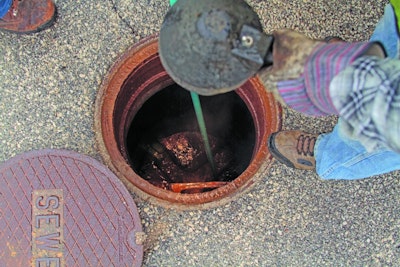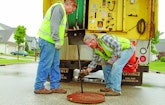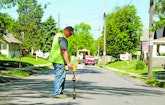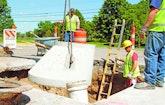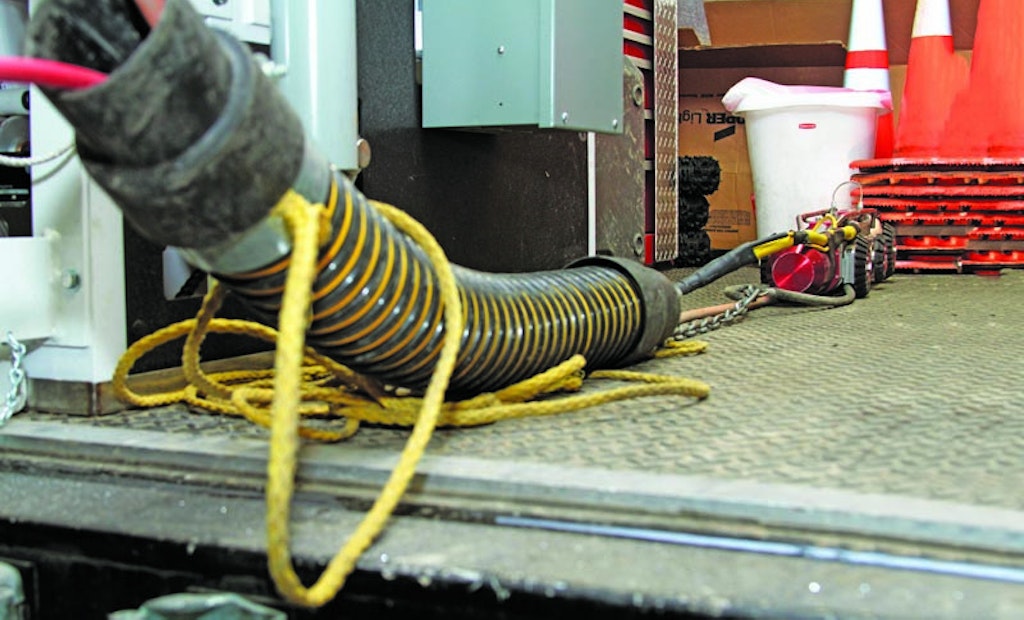Interested in Infrastructure?
Get Infrastructure articles, news and videos right in your inbox! Sign up now.
Infrastructure + Get AlertsThe first wastewater treatment plant in Waukesha, Wis., was built in 1890. While some of the original pipes from that era are still in the ground, a new master plan for the Wastewater Treatment Division is serving as a road map for updates and improvements to the system.
“It gives us the ability to focus on a process and makes everything more proactive,” says Jonathan Schapekahm, hired in 2010 to coordinate the department’s new capacity, management, operation and maintenance (CMOM) program. A complete examination of the sewer system began in 2009 in reaction to inquiries by the U.S. Environmental Protection Agency about eliminating sanitary sewer overflows.
“We hired Donohue & Associates to study the system and develop a master plan and 20-year capital improvement plan,” says Schapekahm. It also help-ed the city comply with a new Department of Natural Resources rule that requires a CMOM program. “The study found that our system is quite robust and performs really well. But there are ways we can optimize it so it not only works better, but more efficiently from a cost standpoint.”
Having easy access to such information has helped the Wastewater Treatment Division work more closely with other departments, especially the city’s street reconstruction program and water utility’s water main projects. “The synergy between us is much better,” says Schapekahm. “If they’re going to do a street, we’re looking at it and so is the water utility, so we can coordinate projects and not tear up areas two or three times.”
Goals
The objective of the plan is to improve the capacity, efficiency and integrity of the sanitary sewer system. “We are in the last year of a four-year project to inspect every one of our 6,134 manholes,” says Schapekahm. By the end of 2014, all of them will have been visually inspected and photographed. Data is recorded in the field and uploaded to the utility’s VUEWorks asset management software.
Chris Langemak, a project engineer for the department, says the master plan allowed the development of a comprehensive televising schedule. “Our original goal was 10 years to televise the entire system and we’re on track to complete it in seven. It will give us a good baseline that will be used to determine future rehabilitation projects and repairs.”
Reducing the number of pump stations is another goal the department is pursuing, along with adding backup power or pumping capability. It will also help toward a goal of replacing or removing all ferrous force mains by 2025 to meet a requirement of the Department of Natural Resources since deteriorating force mains are a major contributor to system overflows.
“The 20-year capital improvement program helps not only for projects, but for budgeting to help manage our rates,” adds Langemak. “It incorporates everything from sewer relays and interceptor projects to the wastewater treatment plant and vehicle replacement.”
Such a plan helps keep rate increases below 9 percent. “We originally had several interceptor projects scheduled for this year and last year,” adds Schapekahm. “When we put them, along with a treatment plant upgrade, into the 20-year spreadsheet, it showed a rate spike of 15 percent.” To avoid that, the work was rescheduled for 2016.
The $611,000 study has helped the department spend money more efficiently, according to Langemak. “By analyzing our pipe cleaning operations, we realized we were cleaning clean sewers. We can now take some of those crews and have them televising sewers so we can better identify problems.”
Langemak and Schapekahm both spent time with sewer flushing crews three years ago to gain a better understanding of the areas that were under a 30-day flushing schedule. “We asked why we were flushing those areas,” recalls Schapekahm. “We once found a step in the middle of a flow line that we had to take out. We were able to strike a lot of those places off the flushing schedule by fixing those issues. It helped us get a grip on the hotspots.”
Manhole rehab
Schapekahm has an annual budget of $300,000 for repairing manholes. Using VUEWorks, he knows which ones need new chimneys, cones or barrel sections. Each is also rated on a 100-point scale.
The original master plan inspection looked at 477 of the manholes and found 16 needing replacement and another 281 that required repair. “This year I did a query and noted many of our manholes downstream of pump stations were suffering. So I specifically went after those.”
He can also do scenario planning. “I can input my budget over a number of years and see how that would affect the overall sanitary system manhole scores,” he explains. “I can see if we are holding our own, falling behind or catching up based on the score. It can help justify additional funds for manhole repairs if needed.”
As part of the rehabilitation plan, he has increased the use of the PRO-RING grade adjustment system from Cretex Specialty Products, which is made of durable expanded polypropylene. It started with just two manholes in a low-traffic residential area in 2010 and a few more in 2011. “In 2012, we had a concrete road that has a lot of truck traffic. Almost all the manholes in the southbound lane are in the wheel line and had sunk a little bit.”
Not only were the manholes getting a pounding, so were the vehicles. So Schapekahm put in 25 PRO-RINGs on that street. It worked so well that he started using them on all sanitary manholes in 2013. “We did a cost-benefit analysis. The most common failure mode in manholes is the freeze-thaw cycle. It seemed like we were just chasing our tails. The PRO-RINGs were about 1.1 times more expensive, but in terms of maintenance we’re going to come out ahead. We’re starting to do the same thing with stormwater manholes.”
Schapekahm is also doing something a little different with the PRO-RING installation to reduce wear and tear. “For sanitary manholes, we don’t put adhesive between the top ring and the frame but instead use a Cretex internal seal,” he says. “We still have it sealed, but it allows some movement during the freeze-thaw cycle, and it doesn’t react to hydrogen sulfide. We’ve had very good success with that.”
Pipe lining
Mapping inflow and infiltration across the system as part of the master plan study showed a rate of 38 percent and identified specific problem areas across the city. That let Langemak prioritize the city’s pipe lining and rehab work. “We’ve attacked one pump station basin that had high infiltration rates,” he notes. “The streets were in decent shape and the sewers were in good condition with some separation at joints, so lining was a really good fit.”
Of the 19,000 feet of pipe rehab done in 2012, about 15,000 feet involved lining. In 2013, lining accounted for 16,000 of the 25,000 total feet of rehab work.
Pump stations
The initial master plan showed that about 12 of the 42 pump stations in the city were candidates for elimination through the installation of two interceptors. Three have already been eliminated, which reduced maintenance costs and electrical use of the sanitary sewer system, one of the larger power users in the city. Since each pump station uses an average of $4,800 in electricity every year, eliminating just the first three is saving more than $14,000 annually.
With a typical life span of around 60 years for the pump station structure, the program calls for rebuilding the mechanics and replacing pumps about every 20 years, and rebuilding pumps every seven years, along with other maintenance matters such as valves, updating controls, code requirements and looking at pumping efficiency.
“On average, we’re looking at two major overhauls a year,” says Langemak. “We also replace any ferrous force mains when we do the overhauls and put all controls inside a building when we can. We also look at if it makes sense to add backup power. The need for new pump stations is looked at more thoroughly now to limit the number. If approved, any new stations include control buildings and backup power sources.”
Langemak, who has been with the department for 19 years, says having such information at their fingertips has made a big difference. “We’re trying to convert from reactive to proactive – looking at the long-term benefits. Instead of just replacing things when they fail, how can we improve the system? Between the study and the 20-year capital improvement plan, we’re trying to do as much as we can as cost-effectively as we can to reduce maintenance costs, be more efficient, and ultimately give our ratepayers the best product out there. We’re now ahead of the curve instead of behind the curve.”
More Information:
Cretex Specialty Products - 800/345-3764 - www.cretexseals.com
Donohue & Associates, Inc. - 920/208-0296 - www.donohue-associates.com
VUEWorks, LLC - 877/636-6413 - www.vueworks.com
